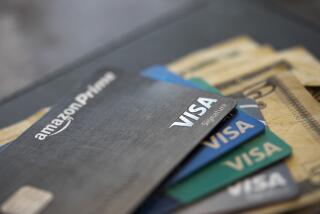By the Numbers
- Share via
There are, so someone once suggested, three kinds of lies. There are ordinary lies. There are damned lies. And then there are statistics. The U.S. government, long regarded as having one of the world’s best statistical systems, doesn’t deliberately churn out false or misleading numbers. But for some time economists and statisticians have been concerned that a lot of flawed data are in fact being produced by various federal number-gathering agencies. The results serve to distort economic perceptions. “America’s lack of information about itself,” warns the congressional Joint Economic Committee, “has increasingly become an impediment to national economic growth.”
What has skewed the numbers? A big part of the problem is that essential information-gathering techniques haven’t kept up with the shift toward a service economy. Services now account for more than 70% of all employment, but the means for measuring economic activity in the service sector are decades out of date. Not long ago most business activity could be gauged by counting the number of tons of steel produced, the number of bushels of corn harvested, how many yards of fabric came out of the mills. Those numbers are still important. The numbers for service industries are at least as much so, and they aren’t being counted as they should be.
The Census Bureau categorizes companies according to what it calls the Standard Industrial Classification. Only one-third of the SIC codes refer to the service sector, even though that is where the bulk of economic activity now takes place. A lot of new businesses lack a code, making it difficult to determine how they contribute to the economy. There is no separate code for computer stores, for example. Both individuals and businesses buy personal computers. When an individual buys, it counts as personal consumption. When a business buys, it counts as capital spending. The distinction is important in reaching economic conclusions. But making the distinction requires information that is currently hard to get.
Delays in compiling accurate statistics helped contribute in recent years to seriously flawed early estimates of the gross national product. False signals aren’t cost-free. They can have major economic consequences, affecting such things as the dollar’s value in relation to other currencies and the rate of monetary expansion. Until quite recently, when it adopted a fully automated system to record import date, the Customs Service was months behind in reporting on foreign-trade statistics. Since 22% of the economy now depends on international trade, timeliness in knowing how the balance of trade stands is of major economic as well as political significance.
Getting the numbers right on such things as prices, productivity, trade, capital outlays and employment is not just a matter of academic interest. Everything from major investment decisions to cost-of-living pay adjustments rides on the accuracy of the information that is turned out. Some students of the problem think that this country’s economy may in fact be a lot stronger than the available numbers indicate, with output totaling perhaps hundreds of billions of dollars more than the current official estimates suggest. But no one really knows, and a surer sense of where the economy stands won’t emerge until concepts are developed to deal with the great economic changes that have taken place, and until adequate resources are committed to getting the numbers right.
The Reagan Administration’s 1981 budget cuts were a serious setback to the efforts by such agencies as the Bureau of Labor Statistics and the Commerce Department to improve the collection and interpretation of economic data. The Gramm-Rudman deficit-reduction law could prove another major blow. The lesson is already clear that stinting on economic data-gathering is false economizing at its worst. Sound economic decisions depend on undistorted economic information. If the nation wants the one, it must first assure that it has the other.
More to Read
Inside the business of entertainment
The Wide Shot brings you news, analysis and insights on everything from streaming wars to production — and what it all means for the future.
You may occasionally receive promotional content from the Los Angeles Times.










